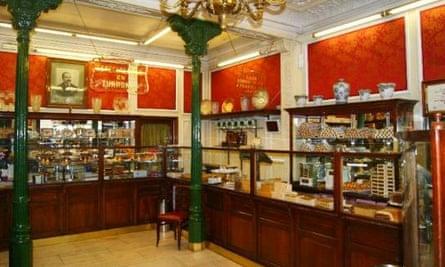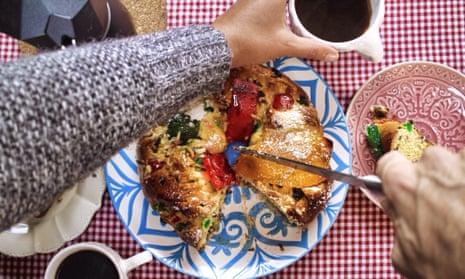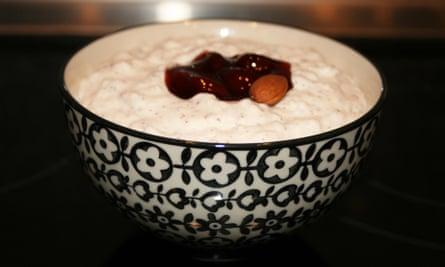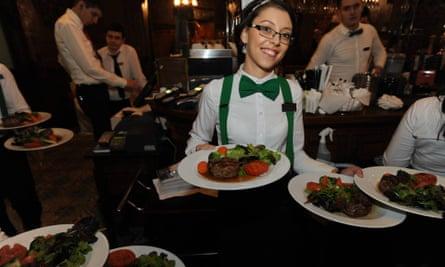Lisbon's Sweet Indulgences
When the holiday vibes embrace Lisbon, the city gets engulfed in a sweet fervor. You'll find locals forming long lines outside traditional pastelarias (bakeries), all in hearty pursuit of a festive sugary fix. Among these, the sonhos (dreams) take the cake — these are airy doughnuts deep-fried to perfection and dusted with a heavenly mix of sugar and cinnamon. They're made in two delightful ways — with a simple flour-and-eggs base or a delicious fusion of flour and mashed boiled pumpkin. Stop by at Pastelaria Versailles, a charming art nouveau haven established in 1922, to savour some of the best ones in town.
Interestingly, the crown of most coveted festive indulgence goes to the bolo rei (king cake), a ubiquity throughout Lisbon during this season. The timeless Confeitaria Nacional (situated near Rossio Square), brought this French delicacy to Lisbon in the 19th century. It quickly won over the country, boasting a soft and slighty dry texture that's not overly saccharine, elegantly balanced out with the crunch of nuts and succulent candied fruits.
There's even the elusive bolo-rainha, the unsweetened cousin of bolo rei, which skips the candied topping. An interesting twist to this tradition involves a hidden dry broad bean within the cake. The lucky (or unlucky, considering the perspective) one who uncovers the bean is customarily ordained the buyer of the next bolo rei.
Biscuits in Brussels
In the Low Countries, the commencement of the festive season is often heralded by the intoxicating aroma of zesty, oven-baked treats. The star among these treats is the speculoos, a delectably crisp biscuit featuring brown sugar and cinnamon. While it's relished across the globe and often paired with a comforting coffee, this biscuit's roots are deeply intertwined with the celebration of Saint Nicholas Day in early December. Children partake in the delightful tradition of leaving their footwear near the fireplace, filled with carrots for the revered Saint Nicholas' horse, only to find delectable speculoos biscuits instead by morning.
A range of towns in Flanders, including the picturesque Ghent and Bruges, have their diverse array of cookies. Yet, it's Brussels that stands tall and proud, embracing speculoos as a celebrated local delicacy. In the heart of the festive December, bakers across Brussels indulge in a joyous tradition of crafting grand speculoos Christmas trees, each measuring to an impressive foot length, with the aide of classic wooden molds. Maison Dandoy, a notable patisserie located on the quaint street aptly christened Rue au Beurre, boasts a reputation of being the finest purveyor of these festive biscuits.
Jennifer Rankin
Fish dishes and sweet bread, Prague
On the days leading up to Christmas a curious site can be seen (and smelled) on the streets of Prague. Throughout the city, fish farmers dressed in full garb sell live carp from huge water-filled tanks. With the original recipe attributed to Magdalena Dobromila Rettigova, called the mother of Czech cuisine, fried carp served with potato salad has been the traditional Christmas meal served in Czech households since at the least the 19th century. While some have the fish vendors butcher the carp on the spot, the more entertaining tradition is taking the carp home live and letting it swim around in the bathtub until it’s time to prepare the meal, served on Christmas Eve. To try this traditional dish head to Pilsen Restaurant in the Municipal House or Aureole (both offer special Christmas menus). And don’t forget to save a scale, dry it and put it in your wallet for the year as doing so is said to bring good fortune.
In sweet contrast, Vanocka is a delicious sweet bread that is traditionally served on the morning of Christmas Day. Similar to a braided brioche or Jewish Challa, this yummy yeast-based loaf, dating back to the 16th-century and taking its name from the Czech word for Christmas (Vanoce), includes raisons, almonds and lemon zest and in some recipes includes anise or nutmeg and is topped with powdered sugar. Two good spots to try Vanocka are Eska, a restaurant and bakery hybrid, and Antoninovo Pekarstvi, a neighbourhood bakery with two locations. Slice and top with butter or honey, or just enjoy this tasty Czech Christmas loaf plain.
Joann Plockova
Perfect pancakes, Berlin
Should you decide to ring in the New Year in the vibrant city of Berlin, you'll get the opportunity to indulge in one of Germany's most delightful culinary customs, thereby disproving a long-held misunderstanding about this energetic capital. A well-known blunder made by US President John F. Kennedy during his June 1963 speech had him uttering the phrase "Ich bin ein Berliner", which ironically translates to "I am a doughnut". However, the precise terminology for a jam-filled doughnut in Germany is a Berliner pfannkuchen, more accurately translated as a "Berlin pancake". It's a common idiosyncrasy that although it's named a Berliner in various parts of Germany, in Berlin itself, locals refer to it as a pfannkuchen. These delightful doughy treats are an evergreen favorite at bakeries throughout the year, but their charm specially sparkles during New Year's Eve festivities. The tradition and fun is in filling one doughnut with mustard out of every eight jam-filled ones. This simple act turns into a playful prank to startle an unsuspecting party guest. So, let's enjoy this German tradition and be a bit forgiving about JFK's little language mix-up.
Philip Oltermann
Soviet-style salad, Moscow
If you crave a taste of Russian winter festive traditions, the Olivier salad, lavishly prepared with mayonnaise, shouldn't go untouched. As a widespread dish during the Soviet era where gourmet food was a scarcity, the Olivier salad embodies simplicity and pragmatism with its ingredients of potatoes, veggies, eggs, ham, and of course, mayonnaise. This dish is so infused in Russian culture that it is featured in the nation's beloved New Year film, Irony of Fate, where it lends to the rom-com's ambiance. Teremok, Russia's home style fast food chain, serves up the most economical version of Olivier salad, allowing you to combine the ingredients by yourself. For those searching for a tasty twist, Varnichnaya, a renowned chain of dumpling cafes, presents a variation made with chicken at all of its outlets. However, if luxury dining is your preference, Mari Vanna lets you indulge in ham Olivier salad with starting prices at RUB470 (£6).
Incredibly, the Olivier salad has evolved from a humble meal during hard times to a splendid festive dish symbolizing resilience and unity. Despite its simple origins, its ubiquitous presence in Russian celebrations shows its endearing appeal to people of all walks of life, from humble homes to posh eateries.
Authored by Sasha Raspopina
Creamy rice pudding, Copenhagen
You can’t spend Christmas in Denmark without being served the nation’s favourite Christmas pudding, risalamande – a cold rice pudding with whipped cream and chopped almonds served with a hot cherry sauce. Originally rice pudding was the traditional Christmas dessert, but as the price of rice rose sharply during the second world war, the cream and almonds were added to make it last. Danes celebrate Christmas on the evening of 24 December when the pudding is served in a large bowl, and a whole almond is added. Whoever gets the almond gets the “almond present”. This has been known to cause great disputes as some people – mainly uncles and grandpas – hide the almond in their hand or in their cheek, thus leaving members of their family not only in great suspense, but with aching bellies from eating way too much of the rich and filling dessert. If you are not celebrating Christmas in a Danish home, you can get risalamande at many restaurants in Copenhagen. A local favourite is Schønnemann’s, in the city centre where you get some of the city’s best smørrebrød. Be sure to have the pickled herring and the schnapps too.
Andrea Bak
Getting piggy with it, Bucharest
In the Romanian countryside the tradition is to slaughter a pig at Christmas, and while this practice is long gone in big cities such as Bucharest, pork dishes remain ubiquitous throughout the holiday period – along with copious amounts of țuică (fruit brandy). Sarmale (minced meat, rice and onions wrapped in cabbage leaves) is available year-round but has a prominent place on the Christmas table, while dishes such as piftie (pork and garlic in gelatine), șorici (salted pork rinds) and jumări (chunks of pork fat, fried) feature heavily. For those visiting Bucharest over Christmas and looking to try some of these meaty treats, traditional restaurants like Caru’ cu bere, a 19th-century beer hall in the heart of the city, Hanu’ lui Manuc, a centuries-old traders inn, and Curtea Berarilor have a full menu of classic Romanian dishes, with platters of the above featured prominently.
Kit Gillet
Seasonal smörgåsbords, Stockholm
As Europe welcomes the festive season of December, immense crowds gather to relish the Yuletide tradition of julbord (Christmas table). This sumptuous feast constitutes a variety of delectable items like savory pickled herring, succulent cured salmon, and the crowd-pleaser, meatballs, which are a part of the traditional smörgåsbords. Adding to this, the grandeur of Christmas safeguards the legacy of 19th-century Swedish culinary treasures by incorporating distinct dishes like the hearty Jansson’s Temptation (a luscious potato-anchovy casserole), the subtle dopp i grytan (bread soaked in rich pork broth), the peculiar lutfisk (a unique gelatinous fish preparation), the comforting risgrynsgröt (a creamy rice porridge), and the star of the show, julskinka (the festive Christmas ham). All this gastronomic delight is paired with a sweet root beer-esque non-alcoholic drink named julmust.
The end of the working season calls for a celebration of such grandeur, and what better way to do it than marking a spot at an overflowing restaurant serving julbord? Yet, for a truly memorable holiday experience, one should consider embarking on a delightful journey aboard Strömma's steamboats which are available for a modest SEK 595 (£51). As you navigate through Stockholm's picturesque archipelago, the flavors of julbord amplify the holiday cheer.
For more travel inspiration and authentic experiences, check out the adventures and writings of Lola Akinmade Åkerström.
Game on, Paris
The French Christmas meal - traditionally known as Le Reveillon – is celebrated on the evening of 24 December – and involves the politically incorrect, and banned in some countries, foie gras, as well as oysters, smoked salmon, turkey or capon and a chocolate cake known as a buche with, depending on the budget, champagne or sparkling wine. Much of this is actually quite new. Traditionally, Catholic families ate their Christmas meal on returning from midnight mass, which in those days started at midnight. Back then Christmas dishes depended on the region: oysters in the west, foie gras in Alsace and the south-west, pork in rural areas.
The Christmas buche or log cake is a tradition apart. It used to be that a log was put on the fire to keep it going through the evening until the family returned from mass. In recent times, with fewer chimneys, the log has been replaced by a chocolate cake desert, these days more often than not industrially produced and filled with ice-cream. A three-course Christmas menu with starters, including foie gras and/or snails and a glass of champagne costs €69 at Julien, part of the fabulously decorated art-nouveau chain that includes Bofinger, La Coupole, Flo and the Terminus Nord (by the Gare du Nord). It’s in the previously unfashionable, but increasingly trendy 10th arrondissement.
Kim Wilsher
Sugar and shortbread overload, Madrid

Sam Jones








